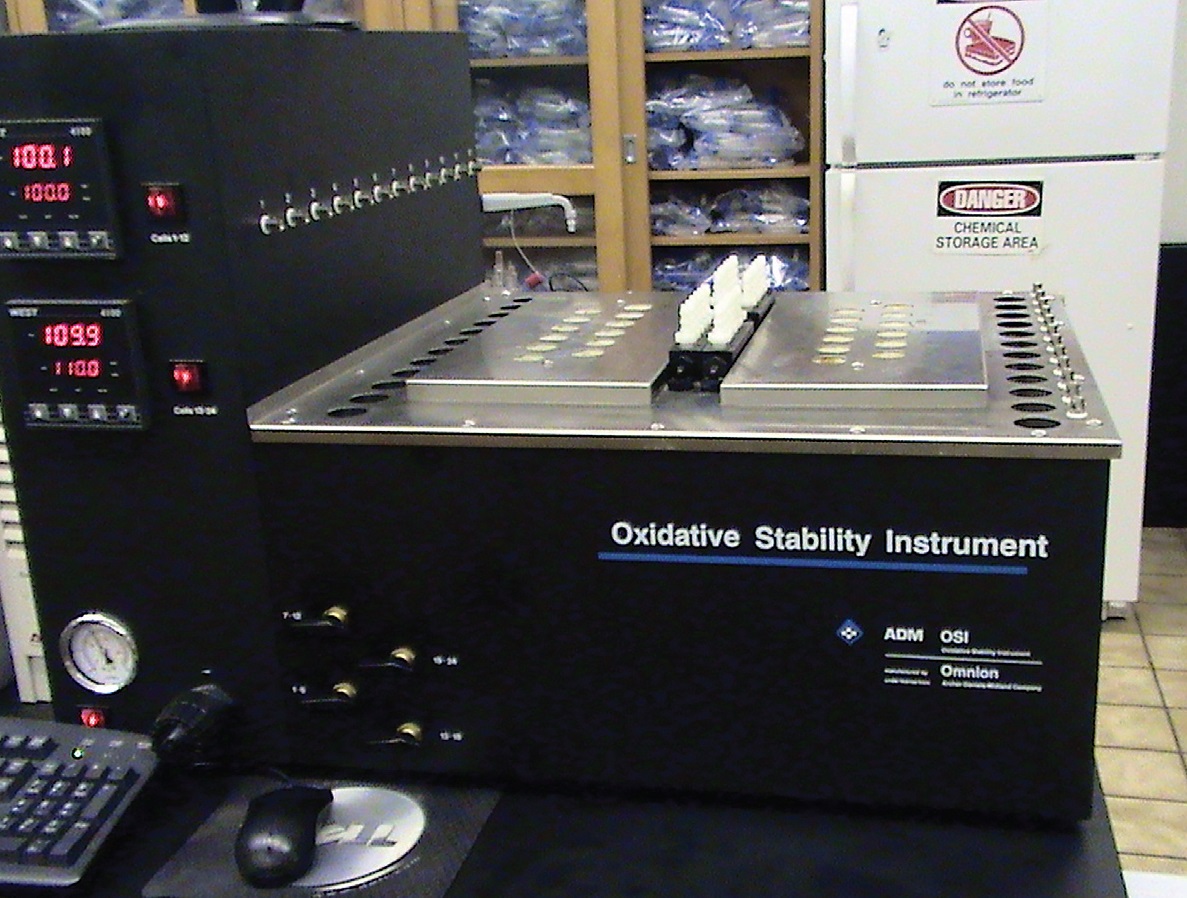Examining biodiesel oxidation
Dr. Neil Canter, Contributing Editor | TLT Tech Beat March 2009
A new study reveals the impact of an antioxidant in a lubricant during long-term storage.
KEY CONCEPTS
•
A new proprietary antioxidant was used to evaluate the storage stability of two types of biodiesel over a 10-week period under summer storage conditions.
•
Low treat rates of the antioxidant retarded the rate of oxidation during the study period.
•
A rescue dose added on the sixth week of the test to a control sample did not retard oxidation as much as antioxidant added at the beginning of the study.
Even with volatility in the pricing of crude oil, work is continuing to improve the viability of biodiesel as an alternative. As discussed in TLT, the many challenges in working with biodiesel include suitable feedstocks, cost-effective processing and preparing a final product that meets industry specifications.
In a previous TLT article, we discussed the use of a solid catalyst to reduce free fatty acid content and an ion exchange resin that can reduce impurities such as residual sodium methylate catalyst, soaps and glycerin (
1). These steps all help to produce acceptable biodiesel that meets industry requirements.
But minimization of contaminants in biodiesel does not eliminate the problem with oxidation inherent in the actual vegetable oil. For example, one common feedstock for biodiesel is soybean oil. The largest fatty acid chain incorporated into soybean oil is linoleic acid at a concentration of approximately 55%. Linoleic acid is an example of a polyunsaturated fatty acid which is readily known to oxidize, leading to the breakdown of biodiesel and formation of higher concentrations of engine deposits.
Steps that can be taken to better understand the rate of oxidation and how antioxidants perform in lubricants are needed to minimize this problem. Dr. Jennifer Radosevich, vice president of research and development for Kemin Industries, Inc., in Des Moines, Iowa, says, “We recognize that oxidation is a threat to the viability of biodiesel and have conducted a study to determine the impact of an antioxidant in a lubricant over a long-term storage period.”
BIODIESEL STABILITY DURING STORAGE
Radosevich indicates that two types of biodiesel were evaluated under typical storage conditions using two treat rates of a new proprietary antioxidant. She says, “We added the antioxidant at treat rates of 250 ppm and 500 ppm in two different types of B100 which are both 100% biodiesel. The antioxidants were added at the beginning of the evaluation. One version is prepared from 100% soybean oil, while the second biodiesel sample is a mixture of animal and vegetable feedstocks.”
Radosevich added that both B100 feedstocks meet the current biodiesel specifications. These include ASTM D6751 and the accreditation program developed by the National Biodiesel Board known as BQ-9000®.
The samples were stored in closed glass containers in a constant temperature oven. Radosevich says, “We maintained the temperature of the test at 43 C during the duration of the 10-week evaluation. This temperature was selected because it is representative of warm summer conditions.” Two control samples also were included that contained only B100 and no biodiesel. All samples were maintained in the dark and had no contact with light during the duration of the test.
The oxidative stability of B100 was evaluated each week through a series of tests. Radosevich says, “Besides checking parameters such as acid value and free fatty acid, we also measured oxidative stability by OSI induction time similar to the Rancimat technique and detected oxidation marker compounds.”
The former method (EN 14112) involves bubbling air through a B100 sample heated to a temperature of 110 C. The volatiles leaving the sample are captured in water. Conductivity measurements of the water are taken to determine how rapidly acids are formed. The time at which the rate of oxidation increases is measured and considered to be the induction period. The instrument used is shown in Figure 3.
 Figure 3. Oxidative stability of the biodiesel samples was measured in part by OSI induction time similar to the Rancimat technique. (Courtesy of Kemin Industries)
Figure 3. Oxidative stability of the biodiesel samples was measured in part by OSI induction time similar to the Rancimat technique. (Courtesy of Kemin Industries)
Conjugated dienoic acids, 2,4-decadienal and hexanal are used as marker compounds to judge the rate of oxidation. One other important parameter evaluated is peroxide value.
B100 sampled with the antioxidant displays good stability over the 10-week test. Radosevich says, “The antioxidant is very effective in retarding the rate of oxidation in B100. We detected small levels of oxidation marker compounds, but their concentrations did not increase to a large extent. Depletion of the antioxidant was found, particularly when used at the 250 ppm treat rate.”
In contrast, the control samples using no antioxidant displayed high levels of oxidation. In fact, a rescue dose of 500 ppm antioxidant was added to both B100 samples on the sixth week of the test. Radosevich explains, “We added a rescue treatment to one of the control samples, which helped to increase the oxidative stability of B100 but not to the extent detected when antioxidant is added at time zero. But the antioxidant did not stop the formation of the oxidation marker compounds.”
The results of this study stress the need for early treatment of B100 with antioxidant. Radosevich says, “Early treatment of B100 with a lower dose of antioxidant generates more effective protection than having to add a higher treat rate once oxidation has started to occur.”
Both B100 samples performed in a similar fashion with the antioxidant. There was a slight difference between them in oxidation, according to Radosevich. She concludes, “The antioxidant can be used effectively to minimize B100 degradation under storage conditions commonly seen during the summer.”
Future research will continue to better understand how antioxidants can be used to minimize the degradation of biodiesel. Additional information can be obtained by contacting Erin Mitchell at
erin.mitchell@kemin.com.
REFERENCE
1.
Canter, N. (2008), “Biodiesel Production and Purification,” TLT,
64 (11), pp. 12-13.
 Neil Canter heads his own consulting company, Chemical Solutions, in Willow Grove, Pa. Ideas for Tech Beat items can be sent to him at neilcanter@comcast.net
Neil Canter heads his own consulting company, Chemical Solutions, in Willow Grove, Pa. Ideas for Tech Beat items can be sent to him at neilcanter@comcast.net.